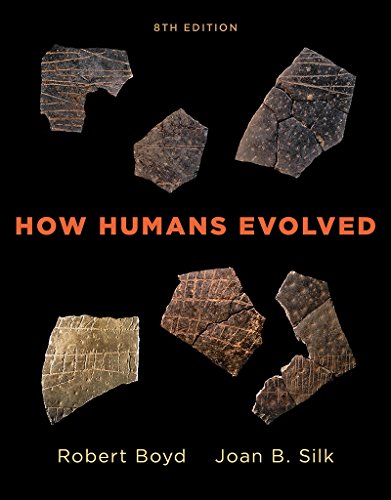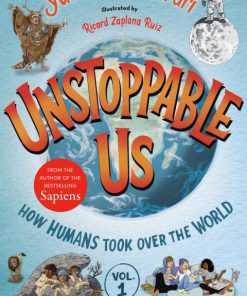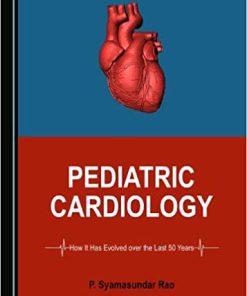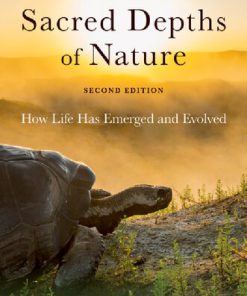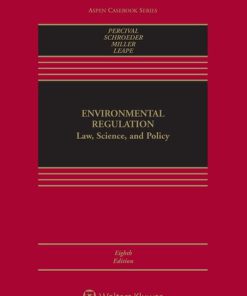How Humans Evolved 8th Edition by Robert Boyd, Joan Silk 0393630153 9780393630152
$50.00 Original price was: $50.00.$25.00Current price is: $25.00.
How Humans Evolved 8th Edition by Robert Boyd, Joan Silk – Ebook PDF Instant Download/Delivery: 0393630153, 9780393630152
Full download How Humans Evolved 8th Edition after payment
Product details:
ISBN 10: 0393630153
ISBN 13: 9780393630152
Author: Robert Boyd; Joan B. Silk
The most complete introduction to the science of human evolution. With a signature blend of evolutionary theory, population genetics, and behavioral ecology, How Humans Evolved teaches the science and history behind human evolution. Thoroughly updated with coverage of recent research and new discoveries, the Eighth Edition offers the most visual, dynamic, and effective learning tools in its field. The Eighth Edition also includes an expanded suite of animations that help students better visualize and understand tricky concepts, as well as real-world videos and InQuizitive adaptive learning.
How Humans Evolved 8th Table of contents:
Part One: How Evolution Works
Chapter 1: Adaptation by Natural Selection
Explaining Adaptation before Darwin 3
Darwin’s Theory of Adaptation 5
Darwin’s Postulates 6
An Example of Adaptation by Natural Selection 7
Individual Selection 11
The Evolution of Complex Adaptations 12
Why Small Variations Are Important 12
Why Intermediate Steps Are Favored by Selection 14
Rates of Evolutionary Change 17
Darwin’s Difficulties Explaining Variation 21
Chapter 2: Genetics
Mendelian Genetics 25
Cell Division and the Role of Chromosomes in Inheritance 26
Mitosis and Meiosis 28
Chromosomes and Mendel’s Experimental Results 29
Linkage and Recombination 32
A Closer Look 2.1: More on Recombination 34
Molecular Genetics 37
Genes Are DNA 38
Some Genes Code for Proteins 40
Regulatory Sequences Control Gene Expression 47
Not All DNA Codes for Proteins 49
Chapter 3: The Modern Synthesis
Population Genetics 53
Genes in Populations 54
How Random Mating and Sexual Reproduction Change Genotypic Frequencies 55
A Closer Look 3.1: Genotypic Frequencies after Two Generations of Random Mating 59
How Natural Selection Changes Gene Frequencies 59
The Modern Synthesis 60
The Genetics of Continuous Variation 60
How Variation Is Maintained 63
Natural Selection and Behavior 65
Constraints on Adaptation 68
Correlated Characters 68
Disequilibrium 70
Genetic Drift 71
Local versus Optimal Adaptations 74
A Closer Look 3.2: The Geometry of Area/Volume Ratios 76
Other Constraints on Evolution 76
Chapter 4: Speciation and Phylogeny
What Are Species 81
The Biological Species Concept 83
The Ecological Species Concept 84
The Origin of Species 86
Allopatric Speciation 86
Parapatric and Sympatric Speciation 89
The Tree of Life 91
Why Reconstruct Phylogenies 93
How to Reconstruct Phylogenies 95
A Closer Look 4.1: The Role of Phylogeny in the Comparative Method 96
Problems Due to Convergence 97
Problems Due to Ancestral Characters 98
Using Genetic-Distance Data to Date Phylogenetic Events 101
Taxonomy: Naming Names 103
Part Two: Primate Ecology and Behavior
Chapter 5: Primate Diversity and Ecology
Two Reasons to Study Primates
Primates Are Our Closest Relatives
Primates Are a Diverse Order
Features That Define the Primates
Primate Biogeography
A Taxonomy of Living Primates
A Closer Look 5.1: Teeth and Guts: You Are What You Can Chew
Primate Diversity
The Strepsirrhines
The Haplorrhines
Primate Ecology
The Distribution of Food
People also search for How Humans Evolved 8th:
how humans evolved
how have humans evolved physically
how much have humans evolved
how humans evolved 9th edition
Tags:
Robert Boyd,Joan Silk,How Humans Evolved
You may also like…
Jurisprudence & Law
Environmental Protection Law and Policy 8th Edition Robert L. Glicksman
Children's Books - History
Medicine
Pediatric Cardiology How It Has Evolved over the Last 50 Years 1st Edition P. Syamasundar Rao
Business & Economics - Sales & Marketing
Customer Service Skills for Success 8th Edition Robert W. Lucas
Politics & Philosophy - Politics
The Politics of Gun Control 8th Edition by Robert J Spitzer ISBN 9781003049371
Biology and other natural sciences - History of Biology
The Sacred Depths of Nature: How Life Has Emerged and Evolved, (Second Edition) Ursula Goodenough
History - World History
Jurisprudence & Law

